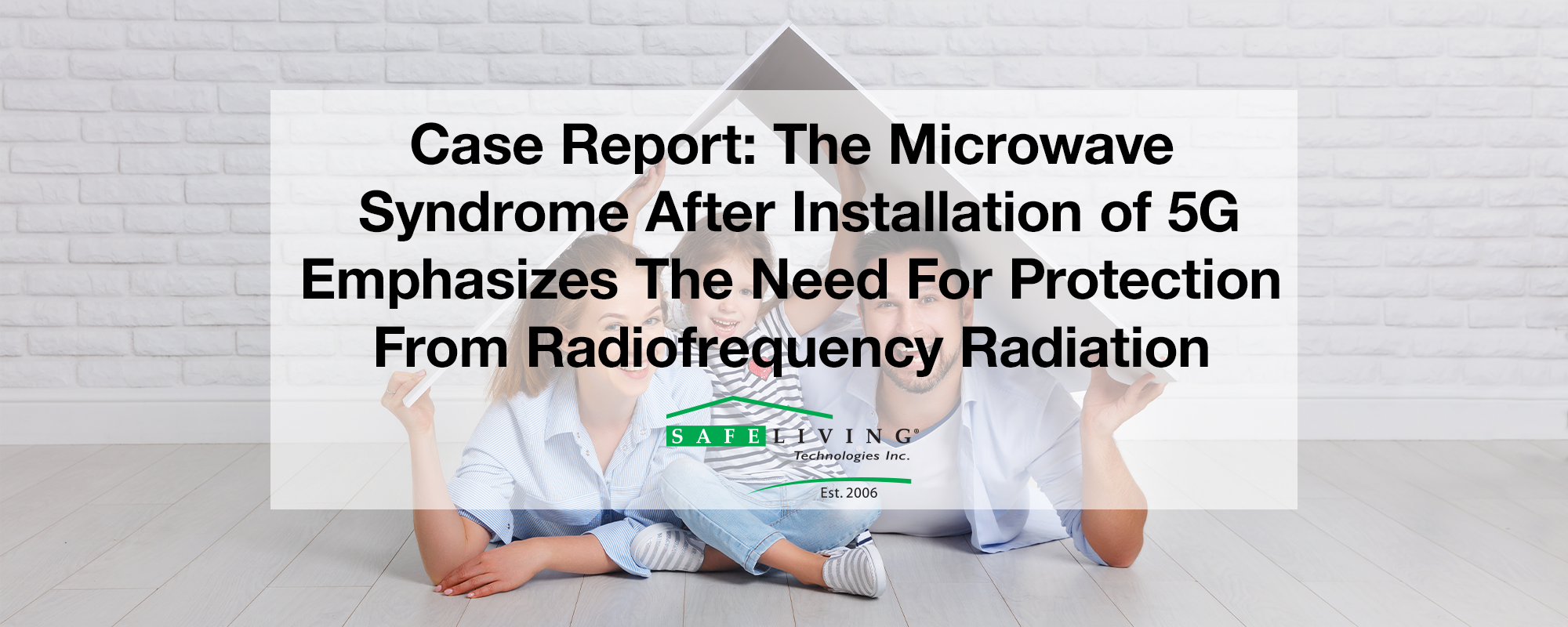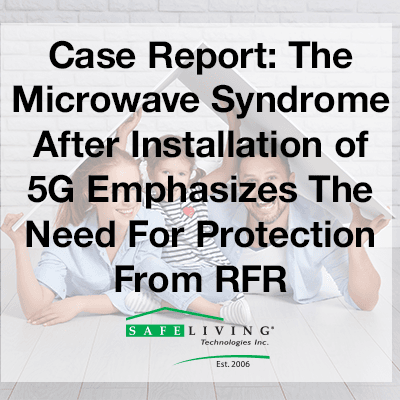Case Report: The Microwave Syndrome After Installation of 5G Emphasizes The Need For Protection From Radiofrequency Radiation

Case Report: The Microwave Syndrome After Installation of 5G Emphasizes The Need For Protection From Radiofrequency Radiation
Lennart Hardell1*, Mona Nilsson2
1Department of Oncology, Orebro University Hospital, Sweden (retired), The Environment and Cancer Research Foundation, Studievägen 35, SE-702 17, Örebro, Sweden
2Swedish Radiation Protection Foundation, Gredby 14, SE-178 92 Adelsö, Sweden
*Corresponding author: Lennart Hardell, Department of Oncology, Orebro University Hospital, Sweden (retired), The Environment and Cancer Research Foundation, Studievägen 35, SE-702 17, Örebro, Sweden
Citation: Hardell L and Nilsson M (2023) Case Report: The Microwave Syndrome after Installation of 5G Emphasizes the Need for Protection from Radiofrequency Radiation. Ann Case Report. 8: 1112. DOI: 10.29011/2574-7754.101112
Received Date: 28 December 2022; Accepted Date: 02 January 2023; Published Date: 10 January 2023
Abstract
In this case, report two previously healthy persons, a man aged 63 years and a woman aged 62 years, developed symptoms of the microwave syndrome after installation of a 5G base station for wireless communication on the roof above their apartment. A base station for previous telecommunication generation technology (3G/4G) was present at the same spot since several years. Very high radiofrequency (RF) radiation with maximum (highest measured peak value) levels of 354 000, 1 690 000, and >2 500 000 μW/m2 were measured at three occasions in the bedroom located only 5 meters below the new 5G base station, compared to maximum (peak) 9 000 μW/m2 prior to the 5G deployment. The rapidly emerging symptoms after the 5G deployment were typical for the microwave syndrome with e.g., neurological symptoms, tinnitus, fatigue, insomnia, emotional distress, skin disorders, and blood pressure variability. The symptoms were more pronounced in the woman. Due to the severity of symptoms, the couple left their dwelling and moved to a small office room with maximum (peak) RF radiation 3 500 μW/m2. Within a couple of days, most of their symptoms alleviated or disappeared completely. This medical history can be regarded as a classic provocation test. The RF radiation levels in the apartment were well below the limit proposed to be “safe” below which no health effects would occur, recommended by the International Commission on Non-Ionizing Radiation (ICNIRP). These now presented symptoms of the microwave syndrome were caused by non thermal effects from RF radiation and highlight that the ICNIRP guidelines used in most countries including Sweden do not protect human health. Guidelines based on all biological negative effects from RF radiation are urgently needed, as well as monitoring human health, not the least due to rapidly increasing levels of exposure.
Introduction
In recent years, human exposure to pulse-modulated microwave radiation [also called radiofrequency (RF) radiation] from wireless technology has increased exponentially. Microwaves are frequencies in the range of 300 MHz to 300 GHz within the radiofrequency (RF) spectrum [1]. The increase is mainly a result of the expansion of 4G+ and 5G as well as an increased amount of consumer products based on technologies that emit microwave radiation.
In parallel with this exploding RF radiation exposure, regulations and so-called safety limits applicable to the permitted RF radiation in most countries are based on a severely outdated approach from the 1950s. These ‘safety” limits (or guidelines) only protect people against harmful effects that occur as a result of acute heating, also called thermal effects. These occur when RF radiation is extremely high thereby causing an increase in tissue temperature of more than 1 °C within a very short time. The guidelines based on thermal effects also ignore the effects of particular characteristics of the exposure as the modulation and/or pulsation or simultaneous exposure to various signals. In consequence, humans are completely unprotected against a whole range of harmful effects that are caused by non-thermal RF radiation. These include cancer, DNA damage, oxidative stress, neurological, and other biological effects that may impair human health. Scientific research has repeatedly and abundantly shown such effects to occur at levels well below the thermal based limits [2-6]. In addition current guidelines for exposure to RF radiation give no protection against harmful effects on biodiversity, i.e., the variety of living species on Earth, including plants, animals, bacteria, and fungi.
Scientists have called for considerably lower maximum allowed limits for the prevention of human health. The BioInitative Report suggested already in 2012 a limit of 30-60 μW/m2, and yet lower for sensitive persons and children, 3-6 μW/m2 [2]. The EUROPAEM EMF guidelines proposed in 2016 maximum exposure to be 10-1 000 μW/m2, and lower at nighttime 1-100μW/m2, and yet lower for sensitive persons 0.1-10 μW/m2 [7]. Comparison of guidelines proposed by different organizations are presented in Table 1. Hundreds of scientists and organizations have called for a revision of the limits for better protection of humans and the environment (www.5gappeal.eu; www.emfcall.org; www.emfscientist.org).
Keywords: Base station; 5G; Radiofrequency radiation; Electromagnetic hypersensitivity; Microwave syndrome; Health
Annals of Case Reports
Hardell L and Nilsson M. Ann Case Rep: 8: 1112


